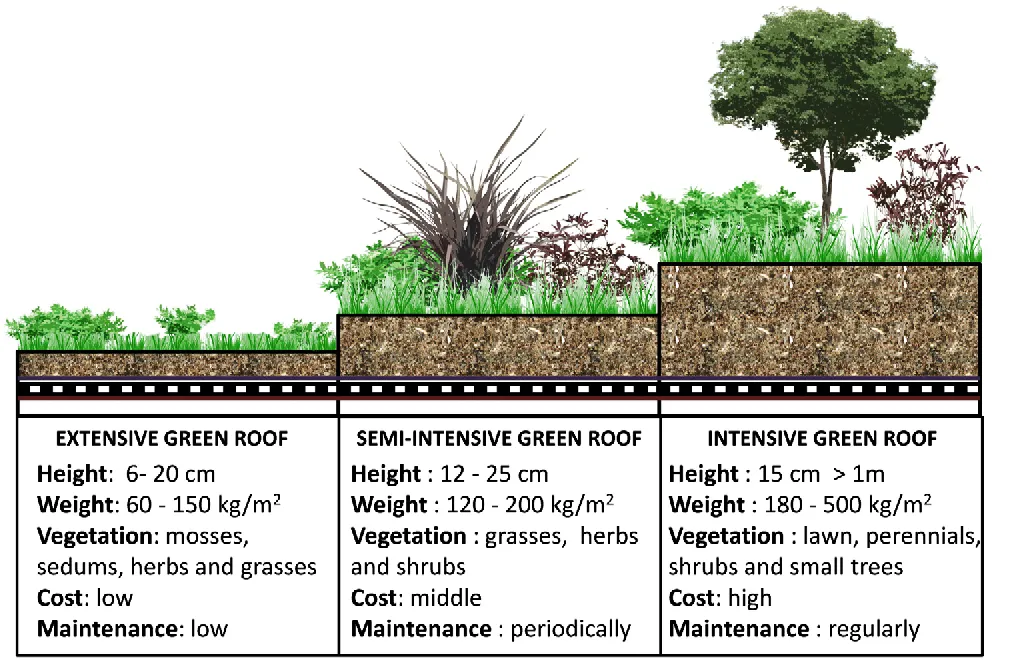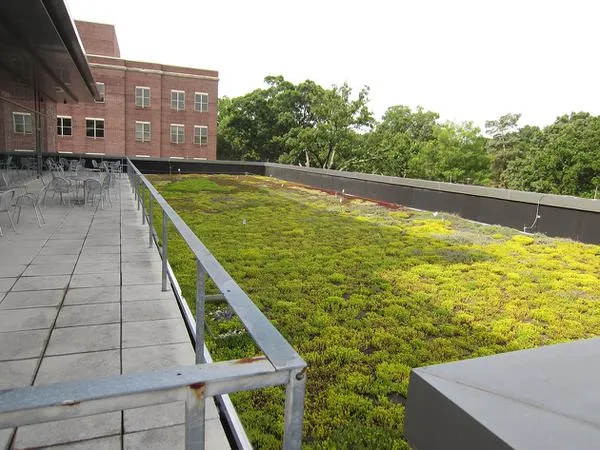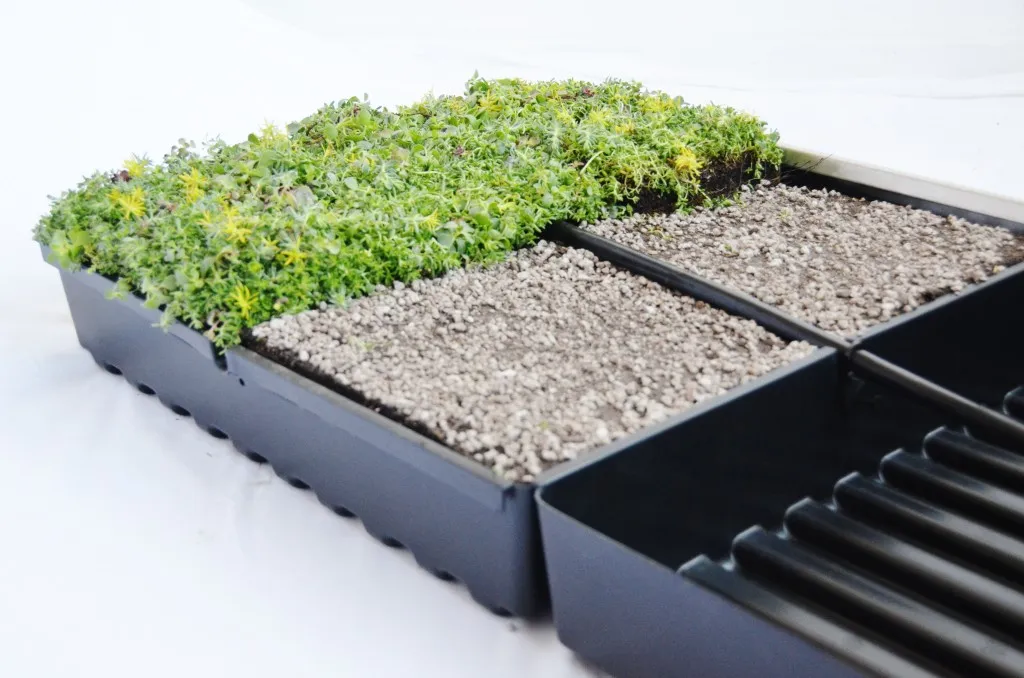If you want to know about the introduction of landscaping and its role or about landscape or terminology used in landscape, please click the link.
Green roof design involves the use of plants and vegetation to create a layer of living greenery on the roof of a building. These green roofs can provide a number of benefits, including reducing the urban heat island effect, improving air quality, and providing natural insulation to the building.
Green roof design includes the following.
- Understanding the structural stability and load bearing capacity (dead and imposed loads) of roof. The structural loading is a combination of dead loads, all permanently placed parts of the roof, including hardscape, plants, growing medium, features, etc; and the imposed loads, such as people and temporary components.
- Waterproofing of the structure and the green areas.
- Arrangement of surface and subsurface drainage of the roof.
- Soil fill, and planting with limited root zone.
- Location and planting of trees.
- Location and design of pavements, walls, landscape features and structures.
1) Design Guidelines

The guidelines given below shall be followed for the design of green roofs (see Figure above).
Screed
- A concrete layer shall be laid on the roof slab to provide slopes for subsurface drainage of vegetated areas, drains.
- Where there is a large green area on the roof, perforated pipes laid in screed shall be used to channelize subsurface water to the adjoining drainage chambers.
Waterproofing membrane
- A protective layer shall be laid on the sloped concrete surface to protect the building’s structure and the waterproofing membrane on the building slab.
Drainage
- Drainage shall comprise of surface drainage and subsurface drainage.
- Subsurface drainage layer shall be very porous to permit water to pass easily through it.
- It should be permanent and continuous over the entire roof surface and strong enough to support the weight of the plant materials and hardscape above it.
- This layer shall be kept free of any materials that could prevent the free flow of water to the drains.
- Drainage cells may be used to increase soil depth.
- Surface drainage shall allow for easy flow of water from the roof surface to the drainage chambers on grade.
- It shall comprise of drains, catch basins.
- They shall be carefully designed to avoid expansion joints on the roof.
Filter membrane
- Helps in containing the roots and the growing medium, while allowing for water penetration and prevents clogging of the drainage layer and roof drains.
Soil
- The depth of soil shall depend on type of planting, screed thickness and structural allowance for fill above slab.
Vegetation
- Shall be grass, shrubs, ground covers, trees.
- Type of vegetation shall depend on the structural allowance for fill above slab.
Irrigation
- Shall be adequately provided.
- The thin depth and well-drained soil used in green roof construction cannot provide the plantings with the subsurface water normally available to ground level plantings.
- Care shall be exercised to prevent the soil mass from drying out and causing damage to the plant materials.
Services/Utilities
- As described in by the Consultant shall be integrated with the landscape
Hardscape
- Includes paving, street furniture and water features, walls, fences, screens, pergolas, kerbs, fire paths, roads.
- The landscape elements shall be considered in relationship to the structural limitations of the roof and its supports below.
- The street furniture, including lighting fixtures shall be carefully anchored on rooftops.
2) Green roof system
- Green roofs have the potential to improve the thermal performance of a roofing system through shading, insulation, evapotranspiration and thermal mass, thus reducing energy demand of building for space conditioning.
- The green roof moderates the heat flow through the roofing system and helps in reducing the temperature fluctuations due to changing outside environment.
- If widely used, green roofs can reduce the problem of heat island effect which in turn reduces the energy consumption in urban areas.
- Green roof systems comprise a lightweight growing medium, plants and a root repellent layer in addition to the regular components of a roof.
- The additional components and thickness of the growing medium provides thermal insulation, while the green cover lowers ambient temperatures through evapotranspiration.
- Issues related to dead weight and water proofing should be considered while designing roof.
- There are three types of green roofs, as follows.

Intensive green roof

- It is like a conventional garden or park with almost no limit on the type of available plants including trees and shrubs.
Extensive green roof

- It is designed for little maintenance or human intervention once it is established.
Modular block green roof

- It is designed in modular units which inter-lock and each module contains drainage systems and plants.
- Use of photovoltaic panels for renewable energy can also be advantageously used for their effect on shading of roof top.
Overall, green roof design requires careful consideration of a variety of factors to ensure that the green roof provides maximum benefits while also being safe and sustainable.